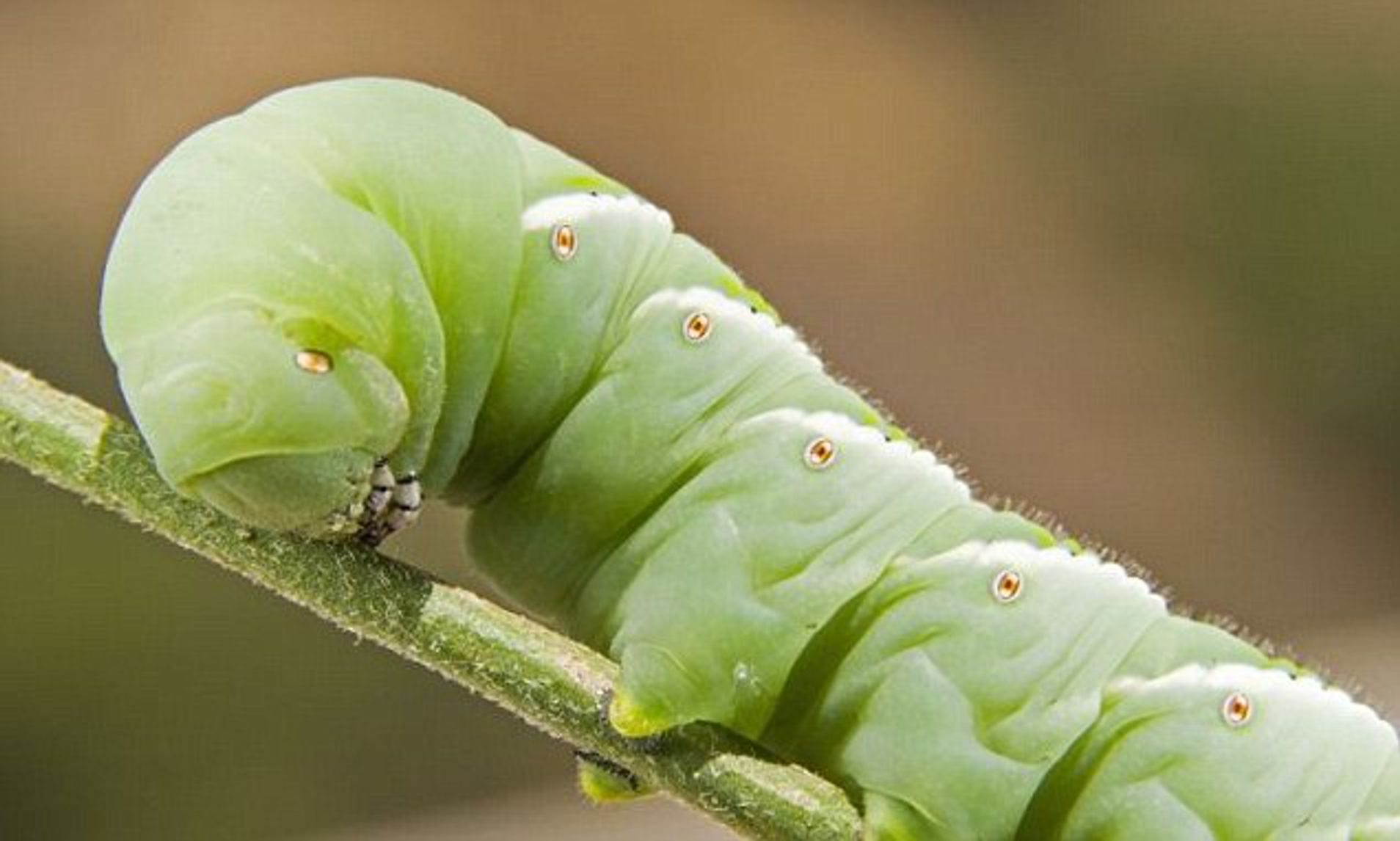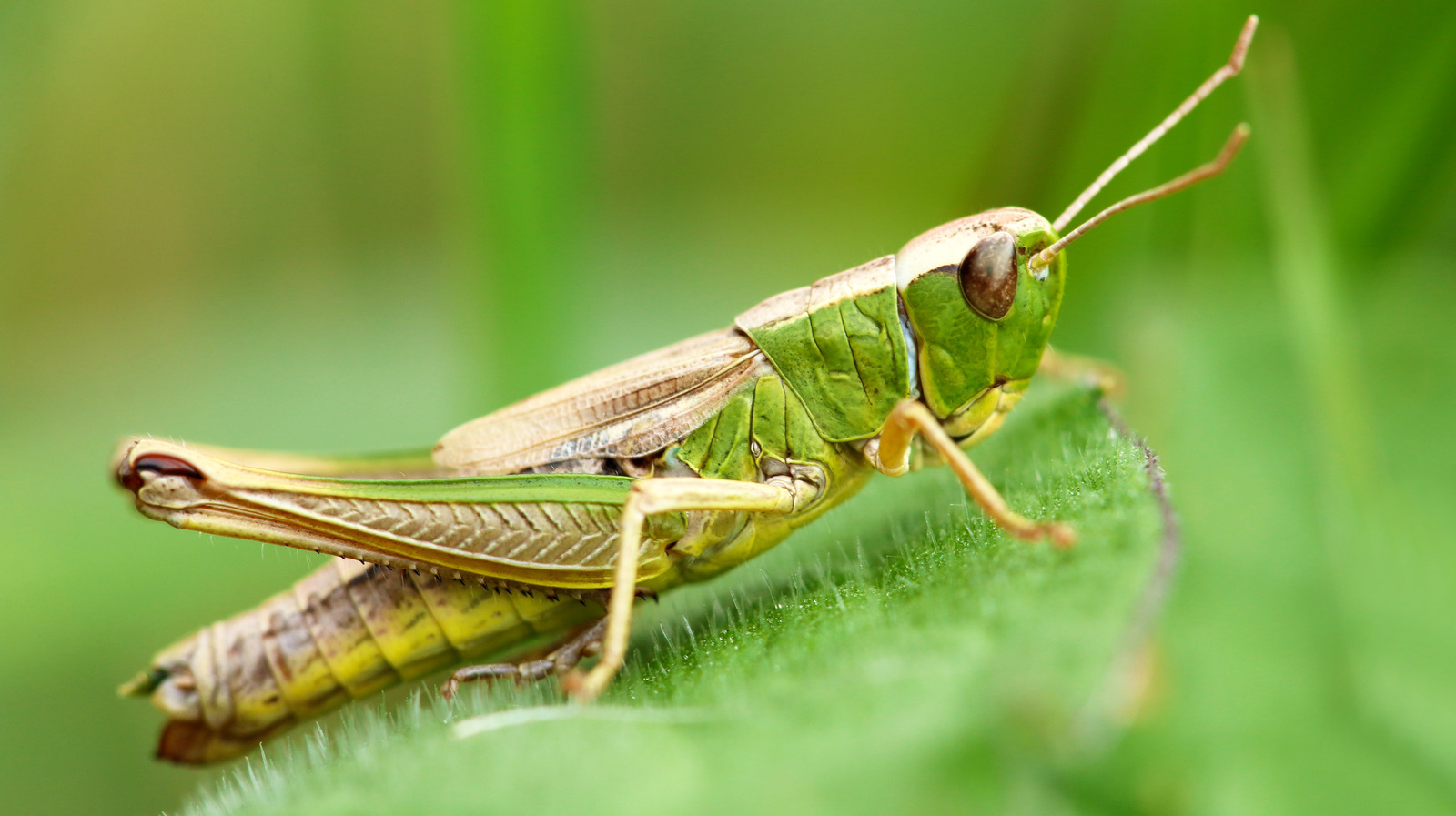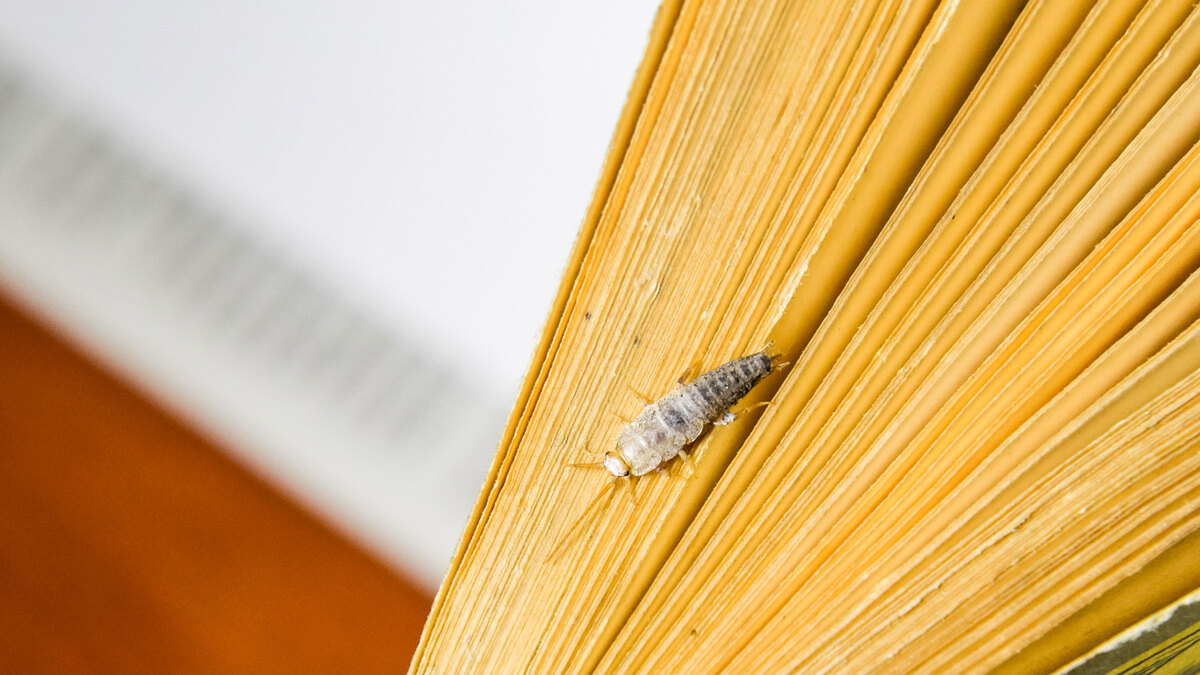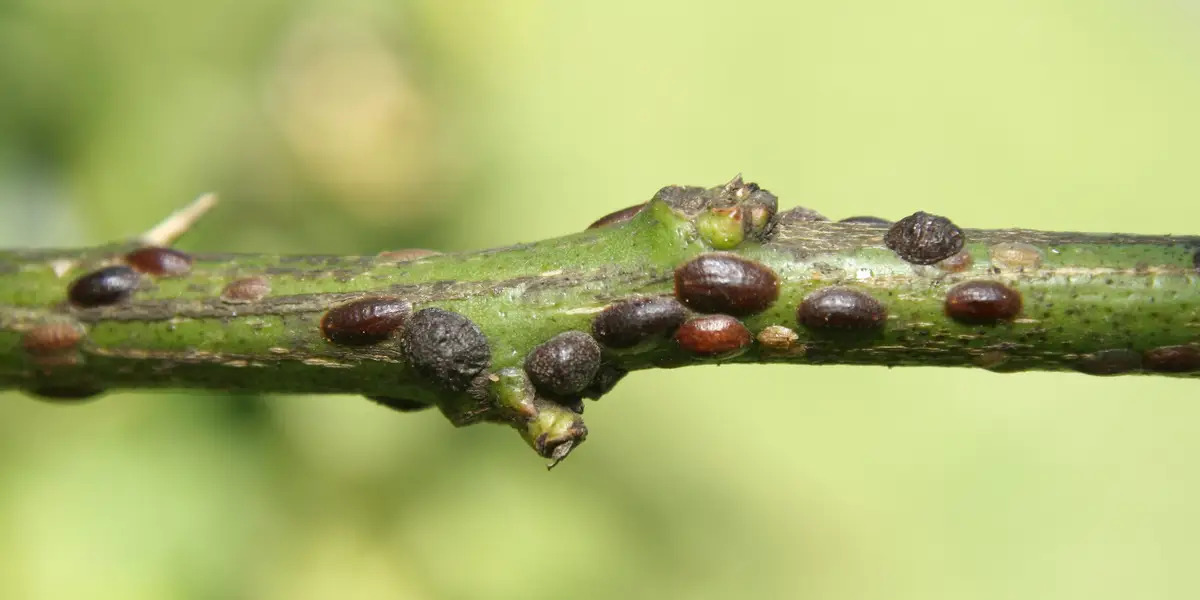Home>Gardening News and Trends>Latest News>How Does Nicotine Kill Insects


Latest News
How Does Nicotine Kill Insects
Modified: January 22, 2024
Discover the Latest News on How Nicotine Kills Insects - Learn the fascinating science behind nicotine's deadly effect on pests and how it can be utilized as an effective insecticide.
(Many of the links in this article redirect to a specific reviewed product. Your purchase of these products through affiliate links helps to generate commission for Chicagolandgardening.com, at no extra cost. Learn more)
Table of Contents
Introduction
Nicotine is a naturally occurring compound found in the leaves of tobacco plants. While it is well-known for its addictive properties and association with tobacco use, nicotine also possesses significant insecticidal properties. In fact, nicotine has been used as an effective pesticide for centuries, dating back to Indigenous cultures in North America who used tobacco leaves to ward off pests in their crops.
When it comes to insects, nicotine can be a formidable foe. It acts as a powerful nerve toxin, disrupting the normal functioning of an insect’s nervous system and ultimately leading to its demise. However, the specific mechanism by which nicotine kills insects is a complex one, involving a series of biochemical interactions.
Nicotine targets both the central nervous system and peripheral nervous system of insects. It interferes with the transmission of nerve signals, causing disruptions in vital physiological processes. As a result, insects exposed to nicotine experience a wide range of deleterious effects, including paralysis, respiratory failure, reproductive and developmental abnormalities, and altered behavior.
Given its potency as an insecticide, nicotine has been widely used in agricultural and horticultural practices to control pest populations. However, its use has become more restricted due to environmental concerns and potential harm to non-target organisms. Nonetheless, understanding how nicotine functions as an insecticide can provide insights into the development of alternative pest control strategies that are effective yet more environmentally friendly.
In this article, we will delve into the fascinating world of nicotine as an insecticide. We will explore its mechanism of action, its impact on the nervous system and other physiological processes, its effects on different insect species, and the potential environmental implications of its use. Furthermore, we will discuss the future prospects of nicotine as a tool for pest control and its role in sustainable agriculture.
Mechanism of Action
The effectiveness of nicotine as an insecticide lies in its ability to disrupt the normal functioning of an insect’s nervous system. Nicotine, when ingested or applied to the insect’s body, acts as a neurotoxin, specifically targeting the nicotinic acetylcholine receptors (nAChRs) present in the insect’s nerve cells.
These nAChRs are responsible for transmitting nerve signals in the insect’s body. When nicotine binds to the nAChRs, it blocks the normal transmission of nerve signals. This disruption interferes with the insect’s ability to coordinate its movements, leading to paralysis and eventually death.
Furthermore, nicotine affects the release and reuptake of certain neurotransmitters, such as acetylcholine and dopamine, which are essential for proper nerve function. By disrupting these neurotransmitter systems, nicotine further impairs the insect’s nervous system.
The effects of nicotine on insect nerves are not limited to just the central nervous system. It also affects the peripheral nervous system, which includes sensory nerves responsible for detecting and responding to stimuli. This disruption in the peripheral nervous system can impair an insect’s ability to detect food sources, avoid predators, or respond to environmental cues.
Interestingly, the mechanism of action of nicotine in insects is similar to its effects in humans and other animals. Nicotine acts on the nAChRs present in our own nerve cells, leading to the release of dopamine and creating a sense of pleasure or reward. This is what makes nicotine addictive for humans. However, in insects, the exposure to nicotine leads to detrimental effects rather than pleasurable sensations.
It is worth noting that the sensitivity to nicotine varies among different insect species. Some insects are highly susceptible to its toxic effects, while others may have developed resistance through genetic mutations or other adaptive mechanisms. This variation in sensitivity has important implications for pest management strategies and the development of targeted insecticides.
In the next sections, we will delve deeper into the specific effects of nicotine on the nervous system, the respiratory system, reproduction and development, behavior, and the comparative toxicity to different insect species.
Effects on Nervous System
Nicotine’s primary mode of action as an insecticide is its impact on the nervous system. The compound interferes with the normal transmission of nerve signals in insects, leading to a variety of physiological disruptions.
When nicotine binds to the nicotinic acetylcholine receptors (nAChRs) in an insect’s nerve cells, it blocks the transmission of nerve signals. This blockade prevents the proper coordination of movements and can result in paralysis. The insect becomes unable to perform essential functions, such as feeding, flying, or reproducing.
Moreover, the disruption of nerve signals caused by nicotine also affects sensory perception in insects. Sensory nerves, responsible for detecting environmental stimuli, become impaired, leading to an inability to respond appropriately to external cues, such as locating food sources or avoiding predators.
In addition to blocking nerve signals, nicotine can also affect the release and reuptake of neurotransmitters like dopamine and acetylcholine. These neurotransmitters play crucial roles in the modulation of behavior and mood, and their disruption can have significant consequences for insect physiology.
The effects of nicotine on the nervous system can be highly species-specific. While some insects are highly sensitive to nicotine and succumb quickly to its neurotoxic effects, others may have developed resistance mechanisms. This resistance is often a result of genetic adaptations that alter the sensitivity or binding affinity of nAChRs to nicotine.
The impact of nicotine on insect nervous systems has sparked interest not only in pest control but also in medical research. Scientists are studying the effects of nicotine on insect nAChRs to better understand the underlying mechanisms and potentially develop novel insecticides with greater specificity and less environmental impact.
Overall, nicotine’s disruption of nerve signaling in insects leads to paralysis, sensory impairment, and ultimately death. By targeting the insect’s nervous system, nicotine provides an effective means of controlling pest populations. However, it is essential to consider the potential environmental implications and develop sustainable alternatives for pest management.
Respiratory System Damage
In addition to its effects on the nervous system, nicotine also causes damage to the respiratory system of insects. The respiratory system of insects consists of a network of specialized tubes called tracheae that deliver oxygen directly to the cells.
When insects are exposed to nicotine, it disrupts the normal functioning of the tracheae. Nicotine affects the ability of the tracheae to expand and contract effectively, reducing the insect’s ability to take in oxygen and release carbon dioxide.
This impairment of the respiratory system leads to respiratory failure in insects. Without sufficient oxygen, the insect’s cells cannot carry out essential metabolic processes, resulting in systemic dysfunction and ultimately death.
Furthermore, the damage caused by nicotine to the respiratory system can exacerbate other detrimental effects. For example, the paralysis caused by nicotine’s impact on the nervous system restricts the insect’s ability to perform movements necessary for proper respiration. As a result, the respiratory damage inflicted by nicotine can further accelerate the insect’s demise.
It is interesting to note that the respiratory system of insects differs from that of mammals. While mammals rely on a complex network of lungs to facilitate gas exchange, insects have a much simpler system consisting of tracheae. This distinction makes the respiratory system an attractive target for insecticides like nicotine, specifically designed to exploit the unique physiology of insects.
The impact of nicotine on the respiratory system has significant implications for pest control. By targeting an insect’s ability to breathe, nicotine effectively incapacitates pests, making it an effective tool for managing pest populations.
However, it is important to consider the potential unintended consequences of using nicotine as an insecticide. The damage inflicted on the respiratory system is not limited to target insects and can potentially affect other non-target organisms that come into contact with the pesticide.
In the following sections, we will explore the disruption of reproduction and development caused by nicotine, its impact on insect behavior, the varying toxicity of nicotine to different insect species, and the broader environmental implications of its use.
Disruption of Reproduction and Development
Nicotine’s detrimental effects on insects extend beyond the nervous and respiratory systems. Exposure to nicotine can disrupt an insect’s reproductive and developmental processes, leading to impaired fertility and compromised offspring.
One of the ways nicotine interferes with insect reproduction is by disrupting the production and release of sex hormones. These hormones are essential for regulating mating behaviors, egg production, and embryonic development. Nicotine’s interference with hormone synthesis and activity can result in reproductive abnormalities, reduced fertility, or even complete sterility in insects.
In addition to affecting reproductive hormones, nicotine can also impact the development and viability of insect eggs and larvae. Studies have shown that exposure to nicotine during critical stages of development can lead to deformities, reduced survival rates, and impaired growth. This disruption in the developmental process can have long-lasting effects on population dynamics and the overall fitness of insect populations.
Furthermore, the impact of nicotine on the reproductive and developmental processes of insects can extend beyond the directly exposed individuals. Studies have shown that nicotine exposure can have transgenerational effects, meaning that offspring of insects exposed to nicotine may also experience reproductive and developmental abnormalities.
Understanding the disruption of reproduction and development caused by nicotine is crucial for developing effective pest control strategies. By targeting these vital processes, nicotine can help reduce pest populations and prevent infestations in crops and other agricultural settings.
However, it is essential to consider the potential environmental risks associated with the use of nicotine as an insecticide. Non-target organisms, such as beneficial insects, pollinators, and other wildlife, may also be affected by the disruption of reproduction and development caused by nicotine. Therefore, it is crucial to carefully evaluate the risks and benefits of using nicotine as a pest control agent.
In the following sections, we will explore the impact of nicotine on insect behavior, the varying toxicity of nicotine to different insect species, the potential environmental implications of its use, and the future applications of nicotine in pest control.
Impact on Insect Behavior
Nicotine’s effects on insects are not limited to their physiological systems; it also has a significant impact on their behavior. Exposure to nicotine can alter various aspects of insect behavior, including feeding patterns, locomotion, mating behaviors, and social interactions.
One of the noticeable effects of nicotine on insect behavior is its ability to disrupt feeding patterns. Insects that come into contact with nicotine may exhibit reduced appetite or even complete loss of interest in feeding. This can lead to starvation and further contribute to the decline of pest populations.
Nicotine’s impact on locomotion is also noteworthy. It can cause motor impairment and disrupt the coordinated movements of insects. This can result in a loss of mobility, making it challenging for insects to find food, establish new colonies, or escape from predators. In some cases, insects exposed to nicotine may become disoriented or show erratic behavior.
In terms of mating behaviors, nicotine can interfere with the chemical communication signals that insects use to locate potential mates. It can disrupt pheromone production or reception, leading to reduced mating success and ultimately affecting reproduction rates. Nicotine’s influence on mating behaviors can thereby contribute to further population reductions.
Additionally, social insects, such as ants and bees, rely on intricate communication systems within their colonies. Exposure to nicotine can disrupt these communication signals, leading to confusion and disarray within the colony. This disruption can impair their ability to perform essential tasks, such as foraging or caring for offspring, ultimately impacting the overall survival and productivity of the colony.
It is important to note that the impact of nicotine on insect behavior can vary depending on the concentration and duration of exposure. While high concentrations of nicotine may cause immediate and severe behavioral disruptions, lower concentrations may lead to subtler changes or longer-term effects on behavior.
The impact of nicotine on insect behavior has implications for pest management strategies. By affecting feeding patterns, locomotion, and mating behaviors, nicotine can disrupt the ability of pests to establish and thrive in agricultural settings. However, it is crucial to consider the potential consequences for non-target organisms and the overall ecological balance.
In the following sections, we will explore the varying toxicity of nicotine to different insect species, the potential environmental implications of its use, and the future applications of nicotine in pest control.
Comparative Toxicity to Different Insect Species
The toxicity of nicotine can vary greatly among different insect species. Some insects are highly susceptible to nicotine’s effects, while others exhibit varying degrees of resistance. This variability in toxicity has important implications for pest management strategies and the development of targeted insecticides.
Several factors contribute to the variation in sensitivity to nicotine among insect species. One crucial element is the presence and density of nicotinic acetylcholine receptors (nAChRs) in their nervous system. Insects with higher numbers or more sensitive nAChRs are generally more vulnerable to nicotine’s toxic effects.
Another factor that influences comparative toxicity is the ability of insects to metabolize and detoxify nicotine. Certain insects possess enzymatic systems that can break down nicotine more efficiently, reducing its impact on their physiology. This metabolic resistance can lead to decreased susceptibility to nicotine and require higher concentrations or alternative insecticides for effective control.
Additionally, the life cycle and developmental stage of insects play a role in their susceptibility to nicotine. For instance, insect eggs and larvae, being in their early stages of development, may exhibit higher sensitivity to nicotine compared to adult insects. This sensitivity can be attributed to the more active cellular division and differentiation processes during early development.
Furthermore, the feeding habits and behaviors of different insect species can also affect their response to nicotine. Insects that predominantly feed on plant tissues or fluids, such as aphids or caterpillars, are more likely to come into direct contact with nicotine and experience its toxic effects. In contrast, insects that primarily feed on other insects or have specialized feeding strategies may have lower exposure to nicotine and exhibit lower susceptibility.
Understanding the comparative toxicity of nicotine to different insect species is crucial for effective pest management. It allows for the selection of appropriate insecticides and strategies that target specific pests while minimizing harm to beneficial insects and the environment.
This knowledge also highlights the importance of integrated pest management approaches, which include a combination of various control methods tailored to the specific pest species and their unique traits. By utilizing an integrated approach, it is possible to minimize the use of nicotine-based insecticides and reduce their impact on non-target organisms.
In the following sections, we will explore the potential environmental implications of using nicotine as an insecticide and discuss the future applications of nicotine in pest control.
Environmental Implications
The use of nicotine as an insecticide carries significant environmental implications. While it has proven to be effective in controlling pest populations, there are several concerns regarding its impact on non-target organisms and the broader ecosystem.
One of the main concerns is the potential harm to beneficial insects and pollinators. Nicotine, when used indiscriminately, can affect a wide range of insect species, including those that play crucial roles in pollination and natural pest control. Bees, for example, are vital pollinators essential for the reproduction of many plant species. Their exposure to nicotine can disrupt their foraging behavior, impair their navigation abilities, or even cause mortality, thus posing a threat to both agricultural productivity and biodiversity.
Moreover, nicotine can accumulate in soil and water systems, leading to unintended contamination. This contamination can persist and affect non-target organisms in these environments. It can disrupt the balance of ecosystems, potentially impacting soil microbial communities, aquatic organisms, and other wildlife that depend on these habitats.
Another concern is the development of insect resistance to nicotine. Prolonged and widespread use of nicotine-based insecticides can select for resistant insect populations. Insects with genetic adaptations that allow them to tolerate or detoxify nicotine are more likely to survive and reproduce, leading to the emergence of resistant pest populations. This necessitates the continuous development of new insecticides and strategies, resulting in a cycle of chemical use that can have unintended consequences for both pests and ecosystems.
Furthermore, the persistence of nicotine in the environment can have long-term effects. Its accumulation in soil and water can result in chronic exposure to non-target organisms, even after the initial application. This chronic exposure may have sublethal effects on these organisms, compromising their health, reproduction, and overall ecological function.
As awareness of these environmental concerns grows, there is increasing emphasis on developing alternative pest control approaches that are more sustainable and environmentally friendly. Integrated pest management (IPM) strategies, which combine various control methods, including biological controls, cultural practices, and targeted insecticides, aim to minimize the use of broad-spectrum insecticides like nicotine.
The future of pest control lies in finding innovative solutions that are effective, selective, and have minimal impact on the environment. This includes developing novel insecticides that specifically target pests while preserving beneficial insects and implementing practices that promote biodiversity and ecosystem health.
In the upcoming section, we will discuss the potential applications of nicotine in pest control and its role in sustainable agriculture.
Potential Applications for Pest Control
Nicotine has long been used as a pesticide for pest control due to its efficacy and broad-spectrum activity. However, its potential applications extend beyond traditional uses, presenting opportunities for innovative pest management strategies.
One promising application is the development of targeted formulations of nicotine-based insecticides. By refining the delivery mechanisms and formulations, it is possible to increase the selectivity of nicotine, targeting specific pests while minimizing harm to beneficial insects and non-target organisms. This approach can help strike a balance between effective pest control and environmental sustainability.
Nicotine can also be integrated into integrated pest management (IPM) programs, which emphasize a holistic and multidisciplinary approach to pest control. Here, nicotine-based insecticides can be used strategically as part of a larger framework that includes biological controls, cultural practices, and monitoring techniques. This integration allows for a more sustainable and long-term management strategy that minimizes reliance on chemical intervention.
Furthermore, the synergistic effects of nicotine with other insecticides or pest control methods are being explored. Combining nicotine with other compounds, such as botanical insecticides or microbial agents, can enhance its effectiveness and reduce the required concentration for pest control. By using lower doses of nicotine, the potential harm to non-target organisms is significantly reduced.
In addition to its effectiveness against insect pests, nicotine-based insecticides can play a role in managing pest resistance. Alternating or rotating insecticides with different modes of action, including nicotine, can help mitigate the development of insect resistance to specific compounds. This proactive approach promotes sustainability by prolonging the effectiveness of available pest control options.
Furthermore, as our understanding of insect physiology and behavior advances, there is a potential for the development of more targeted and specific nicotine-based insecticides. By optimizing the formulation, delivery, and application methods, it may be possible to enhance the selectivity of nicotine and maximize its impact on pests while minimizing adverse effects on non-target organisms.
It is important to note that while nicotine-based insecticides may have a place in pest control, they should be used judiciously and as part of an integrated and balanced approach. Regular monitoring, proper application techniques, and consideration of the potential environmental risks are crucial for effective and sustainable pest management.
In the concluding section, we will summarize the key points discussed and highlight the importance of continued research and innovation in the field of pest control.
Conclusion
Nicotine, with its potent insecticidal properties, offers a powerful tool for pest control. Its ability to disrupt the nervous system, impair respiratory function, and impact reproduction and behavior makes it an effective weapon against a wide range of insect pests. However, it is crucial to consider the potential environmental implications and develop sustainable alternatives.
Understanding the mechanism of action of nicotine and its varying toxicity among different insect species is key to effective pest management. This knowledge allows for the targeted use of nicotine-based insecticides while minimizing harm to non-target organisms. Integrated pest management approaches, incorporating a combination of control methods, are essential for sustainable pest control. By utilizing an integrated approach and considering the broader ecosystem, we can develop effective strategies that strike a balance between controlling pests and preserving biodiversity.
Furthermore, ongoing research and innovation are critical for the future of pest control. Refining the delivery mechanisms, exploring synergistic effects, and developing targeted formulations can enhance the effectiveness and selectivity of nicotine-based insecticides. Additionally, continued investigation into alternative pest control methods and the development of sustainable strategies are necessary to reduce reliance on chemical intervention.
In conclusion, nicotine is a powerful insecticidal compound with significant potential for pest control. However, its use should be approached with caution, considering the potential impacts on non-target organisms and the environment. By integrating nicotine-based insecticides into holistic pest management approaches and fostering research and innovation, we can develop effective and sustainable solutions to manage pests while preserving the health and balance of our ecosystems.





